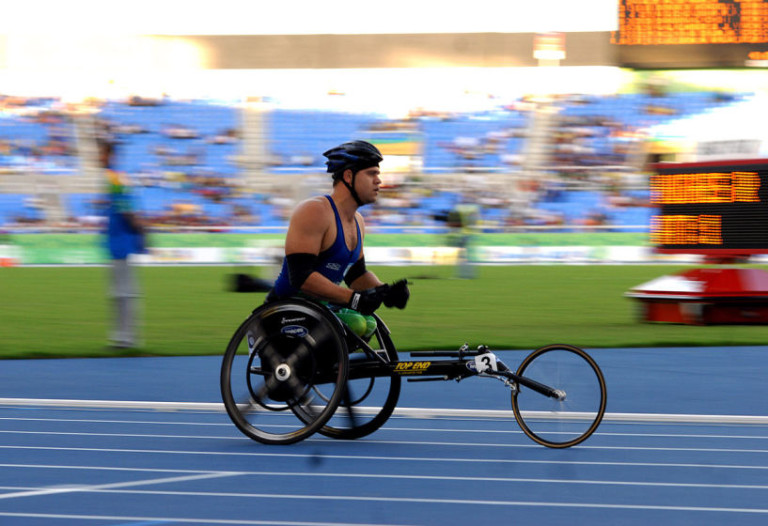If you’re living with reduced mobility, whether you’re an elite sportsperson or an amateur with a passion for adventure, when travelling by plane you’ll need to contend with the logistics of transporting your sporting wheelchair – and perhaps even more than one.
While it’s certainly not unusual, and most airlines have a good policy for transporting mobility reduced passengers and their equipment – offering assistance, generous baggage allowances, and pre-boarding, for example – the more preparation you make before the flight, the less stress you’ll have. Choose a good airline, pre-book your airport transport to your final accommodation, and you shouldn’t have to encounter any awkward or prohibitive situations.
Which Airlines Are Wheelchair Friendly?
Most airlines have special provisions in place for passengers travelling with reduced mobility, including those dependent on wheelchairs. However, every different airline has different regulations and requirements in terms of weight, dimensions and carriage of aspects like wheelchair batteries, so you’ll need to check with them individually before you book. (Remember, if you’re going long haul you can’t assume connecting carriers will offer the same baggage rules and capacity.) Many airlines include wheelchairs (including sporting wheelchairs) and other mobility equipment as part of your regular allowance, while others classify it as sports baggage, which may still be carried free in addition to your checked baggage. However, if you’re heading to a sporting competition with more than one wheelchair you may face charges.
As well as the airline’s website, it’s a good idea to go on to forums and read reviews and feedback regarding escorts, assistance and baggage allowances, because it’s also important to know your chosen carrier is wheelchair friendly in the cabin as well. First hand experience is a good way of finding out any aspects of seat space pitch or width issues in terms of using an inflight wheelchair.
Packing Up Your Sporting Wheelchair for Travel
One major issue when flying with wheelchairs is the battery – if they have one. This is the first aspect you’ll need to consider when preparing for a flight. While it’s not likely a sporting wheelchair will be battery-powered, you will, of course, have to consider your regular wheelchair in the mix as well. Again, the rules are completely dependent upon your airline. There are restrictions in place in terms of lithium and wet-cell batteries, which may need to be removed and taken on as hand luggage, or securely packed and checked in separately. Sealed, non-spillable batteries are usually accepted in the cargo hold, however unsealed, spillable ones are not.
Before you pack your wheelchair for travel, it’s a good idea to get a service and check for any problems. Depending on the model, you should either dismantle and remove the wheels, or, if it is fully collapsible, ensure that it is folded properly with no protruding parts. Depending on your budget, you can pack your wheelchair in a strong cardboard box, or a purpose-made bag or case. Many sporting wheelchairs come with their own lightweight travel bags. You should still take care to secure any moving parts with tape and pad out any spaces with clothing or towels to reduce the chance of damage in transit and on the baggage carousel.
Any extras like puncture kits, pump, pushing gloves, and specialised sensitive medical equipment and supplies should be packed in a separate carry on bag.
At the Airport
Your airline may offer pre flight boarding, which is ideal for wheelchair users, however you’ll still need to arrive early enough to ensure your sporting wheelchair will join you on your flight without any hiccups. Have the weight and dimensions of your wheelchair on hand, as well as any documentation and emails you’ve entered into with the airline with regards to its transport. You may also be required to produce medical and insurance documentation before you can check in.
At the other end, you’ll need to find out whether your wheelchair will come through on the baggage carousel or at an oversized baggage point. If you’re travelling with an airline that offers assistance for boarding and disembarking, they should organise this for you. You’ll also need to inform your airport transfer service company if you have reduced mobility (see below) so they can be prepared for your extra baggage requirements and a special meeting point, if required.
Shuttle Direct – Catering to Every Need
At Shuttle Direct whether it’s a surfboard, your golf clubs, or a vital piece of equipment like a sporting wheelchair, we’re proud to be able to offer our excellent airport transfers service to cater to every need. If you’re living with reduced mobility and need to travel with your wheelchair, we’ll make sure your transportation runs smoothly. Our user friendly system allows you to make an instant online booking, and we’ll be able to get you and your wheelchair to wherever you’re going without delay.
Keep Us Informed So We Can Help
It’s very important that you advise us at the time of your service booking request if you’re travelling with reduced mobility and need to bring along a wheelchair for sports, leisure or everyday life. Knowing your requirements ahead of time ensures we can dispatch the correctly equipped vehicle for your needs. Our Customer Care team are here to help at any stage, so contact us if you need assistance or have any questions.




